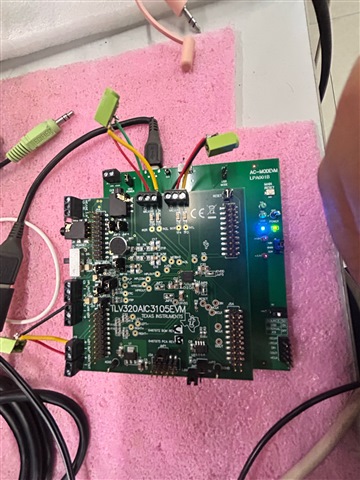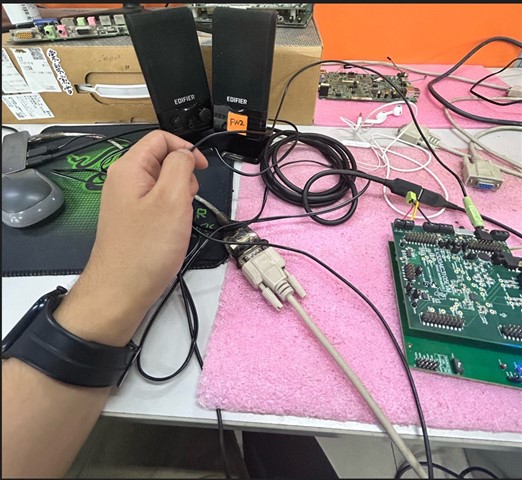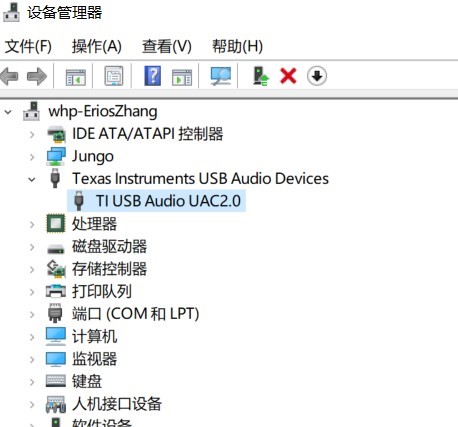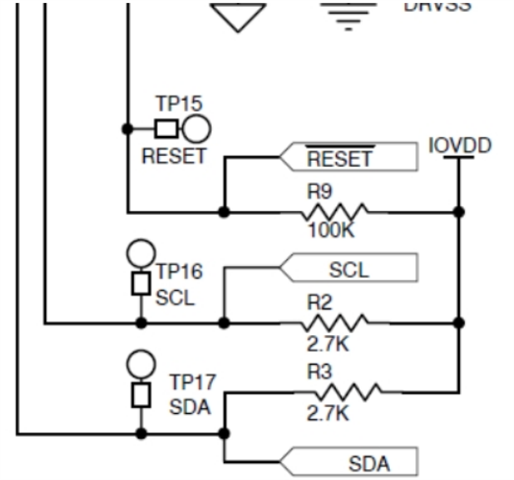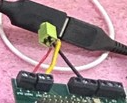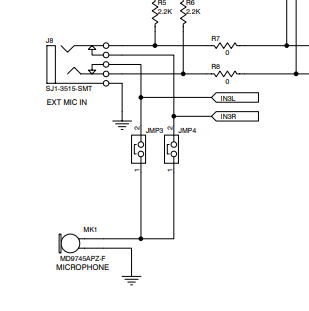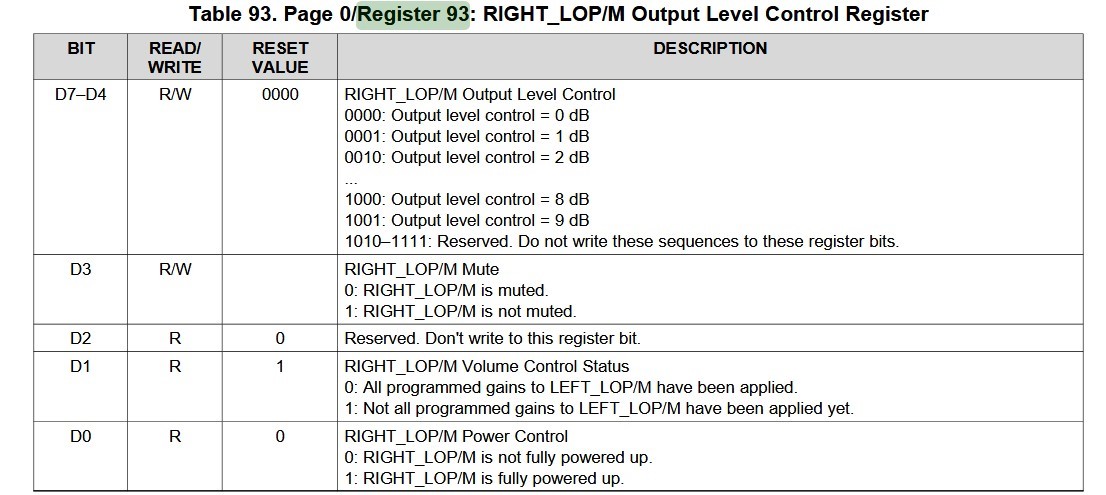Other Parts Discussed in Thread: TLV320AIC3105
Tool/software:
Hi Sir,
My customer followed the TLV320AIC3105EVM-K user guide and TLV320AIC310xEVM-K GUI tool to do the configuration.
After they configured the channel setting in the EVM and the GUI, the command line always showed the text "bus interface error!", and the EVB's USB Ready LED flashed once. This issue persists even after a software or hardware reset.
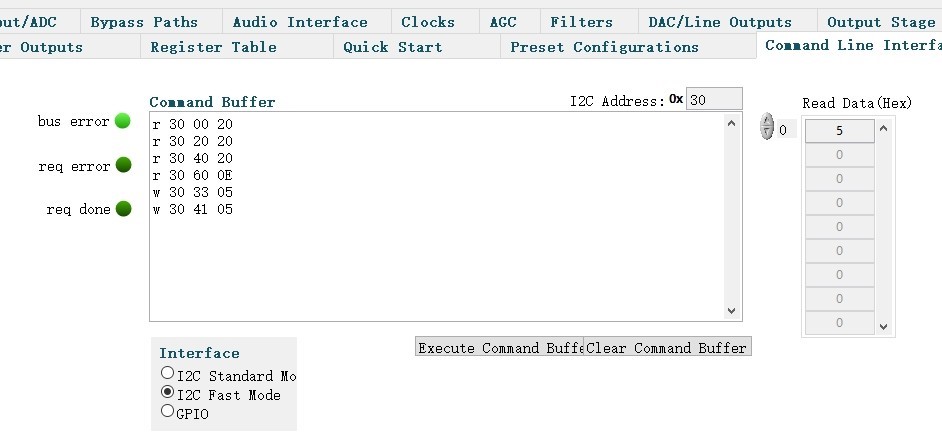

In the status, they continued to do the following test item-1 and item-2, the sound channel and found the sound cuts off after about one second, and the EVM itself does a power reset.
Test item-1, used TLV320AIC3105EVM-K J8(Ext Mic-in) and J9(Headset Output) to do the sound test. The configuration is as follows:


Test item-2, used the J14 to test the Line2 internal bypass channel configuration. The configuration is as follows:

May I know how to check any EVB settings or GUI settings to fix these issues?



